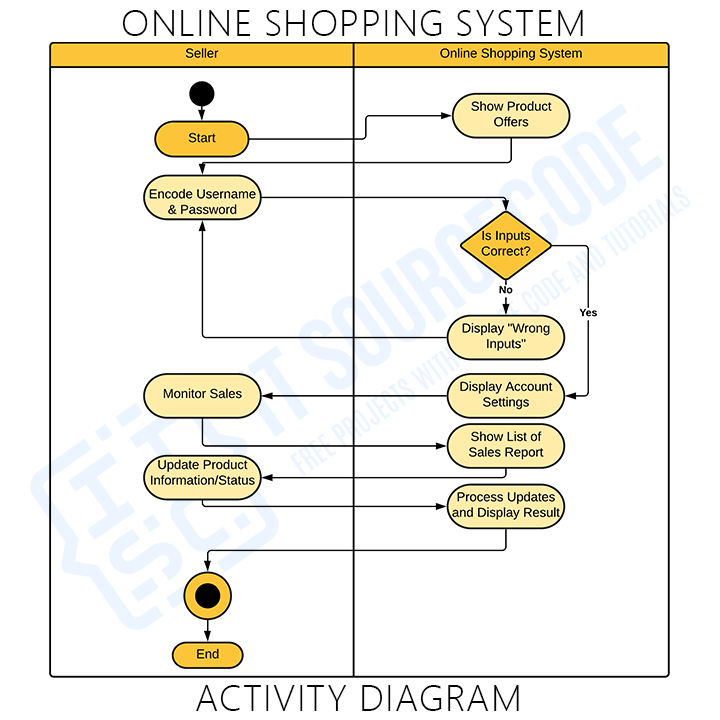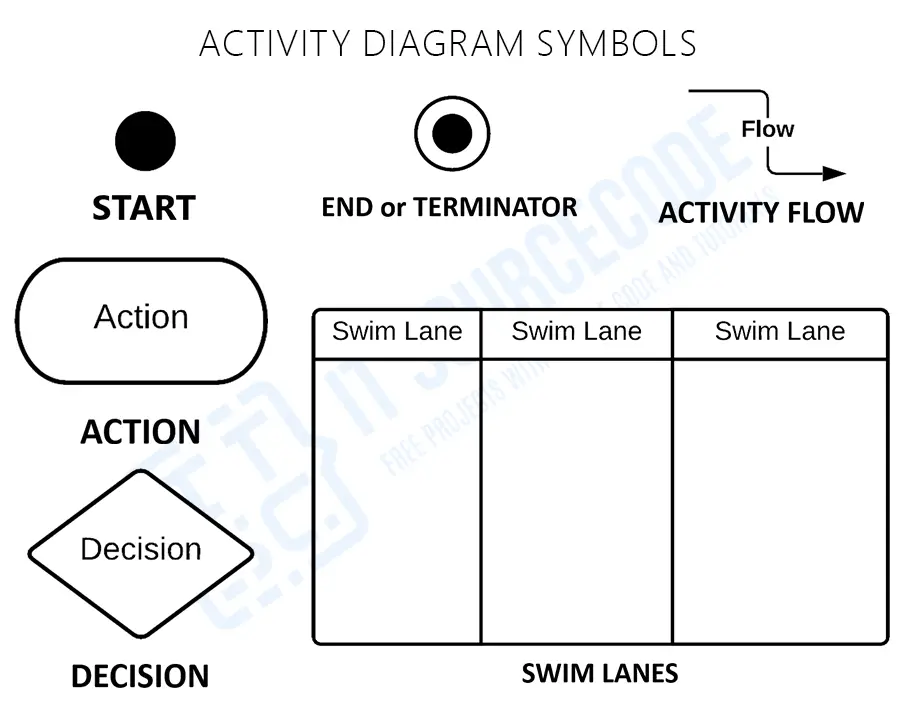The activity diagram for online shopping management system is a state chart variation that is a graphical representation of an executed collection of procedural purchasing actions. This section goes into great detail about the parallel and conditional activities, use cases, and system functions.
Online Shopping System Details
The table shows the project details of the activity diagram for shopping system. It has the complete details of the project.
| Name: | Online Shopping System Activity Diagram |
| Abstract: | The Online Shopping System Activity Diagram in UML represents the behavior of the project in terms of its activities. It contains the important details on the activities and constraints done in the project. |
| UML Diagram: | Activity Diagram |
| Users: | System Admin, Sellers, and (Shopper) Buyers. |
| Tools Used: | Diagram tools that provide activity diagram symbols. |
| Designer: | ITSourceCode.com |
UML Activity Diagram for Shopping System
Project development uses the UML Activity Diagram for online systems. It shows the project’s primary tasks and restrictions. Labels help programmers and users understand online shopping management systems.
Activity Diagram (Shopper Side) – In this illustration, you will see the interaction between the shopper and the system with the flow of arrows in the system using swimlanes.

Activity Diagram (Seller Side) – Now here’s the illustration of the shopping management system on the seller’s side, showing the interaction using swimlanes.

Activity diagram for shopping system pdf
You may download the PDF file by clicking the button below. It has the full details and discussion of the system’s component diagram. You can also modify its content to complete your project requirements and needs.
Steps on how to create an activity diagram for an online shopping management
Time needed: 5 minutes
Here are the steps in creating (designing) the activity diagram for the online shopping system.
- Step 1: Familiarize Activity Diagram Symbols
First, Activity Diagram Symbols are used to create an Activity Diagram which was presented here.

- Step 2: Identify the flow of actions.
Second, after familiarizing yourself with the symbols used in designing an activity diagram, you then need to identify the flow of actions included based on your use case diagram.
- Step 3: Add the Actors (users) involved.
Third, actors carry out their actions on things, transforming them into other objects or changing their state.
- Step 4: Trace the flow of activities.
Finally, Action or control flows (paths or edges) are utilized to depict the change from one activity state to the next.
Conclusion:
You need to know the diagrams used to design and develop the online shopping system. This is due to the fact that without it, it is impossible to create a fully functional system.
But if you create this activity diagram, you will know the possible inputs and scenarios that the system should process and perform. Not only that, but you will identify the processes that are required and connect them to the other UML Diagrams.
Related Articles:
- Online Shopping System Use Case Diagram
- Online Shopping System ER Diagram
- Sequence Diagram for Online Shopping System
- Online Shopping Complete UML Diagrams
- Online Shopping System DFD
Inquiries
If you have inquiries or suggestions about the Online Shopping System, just leave us your comments below. We would be glad to hear your concerns and suggestions and be part of your learning.


